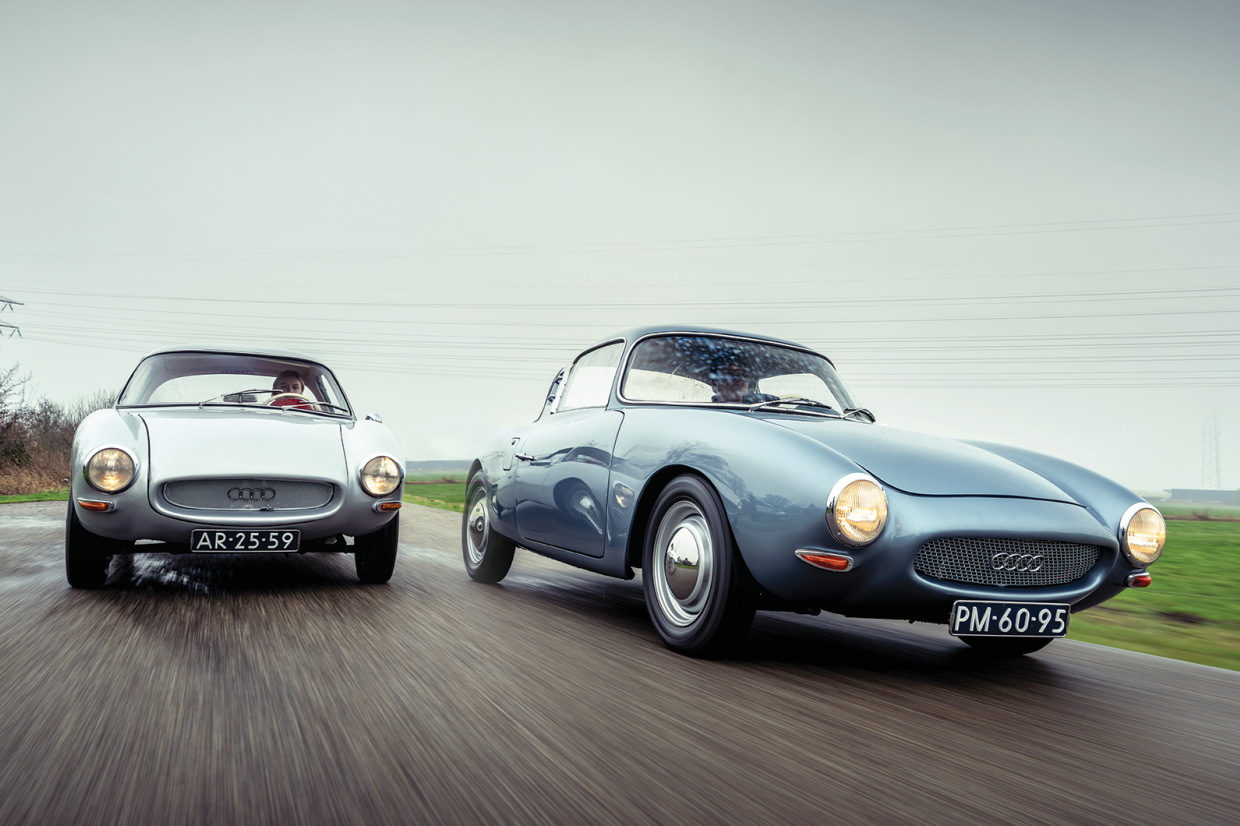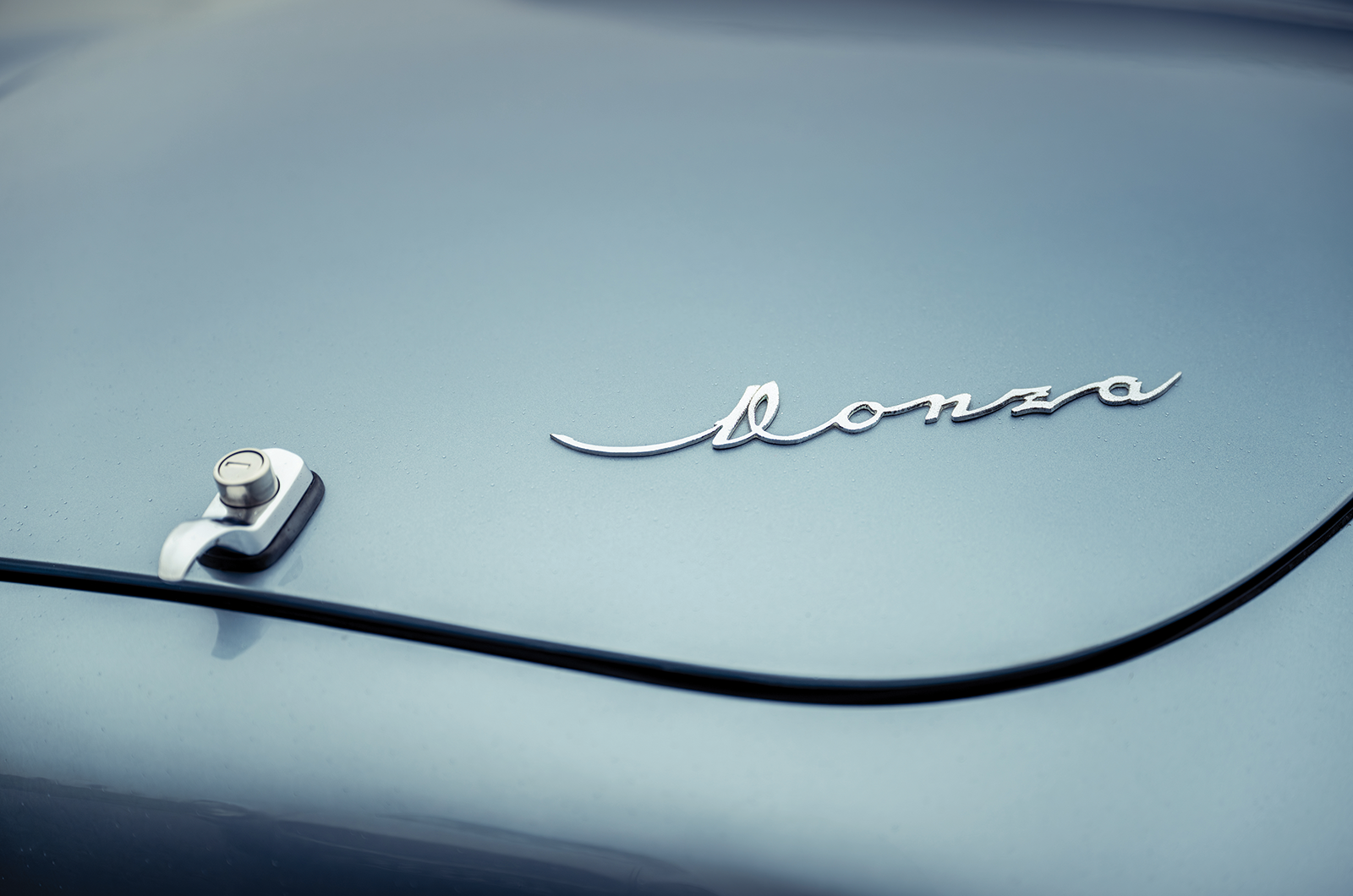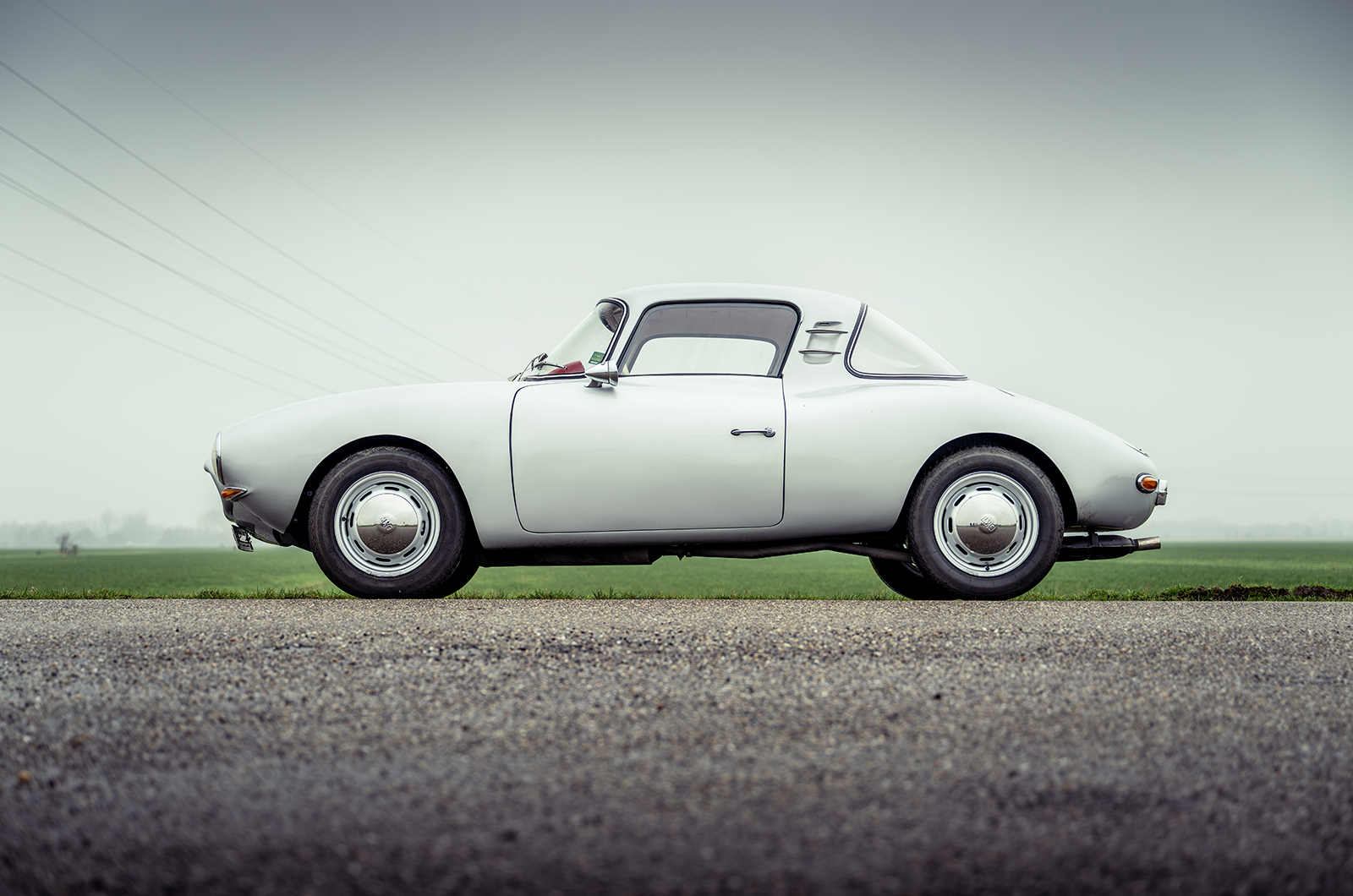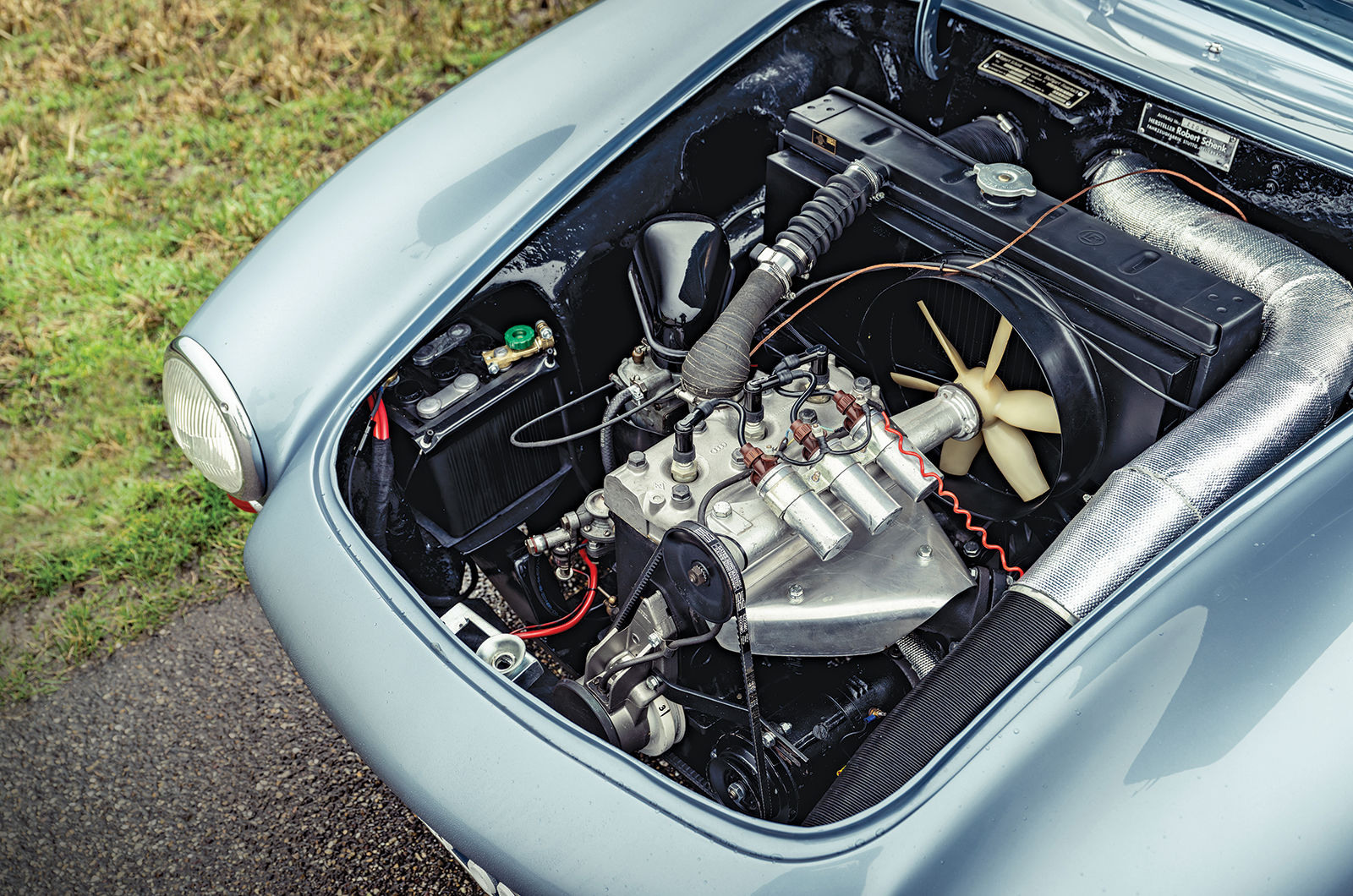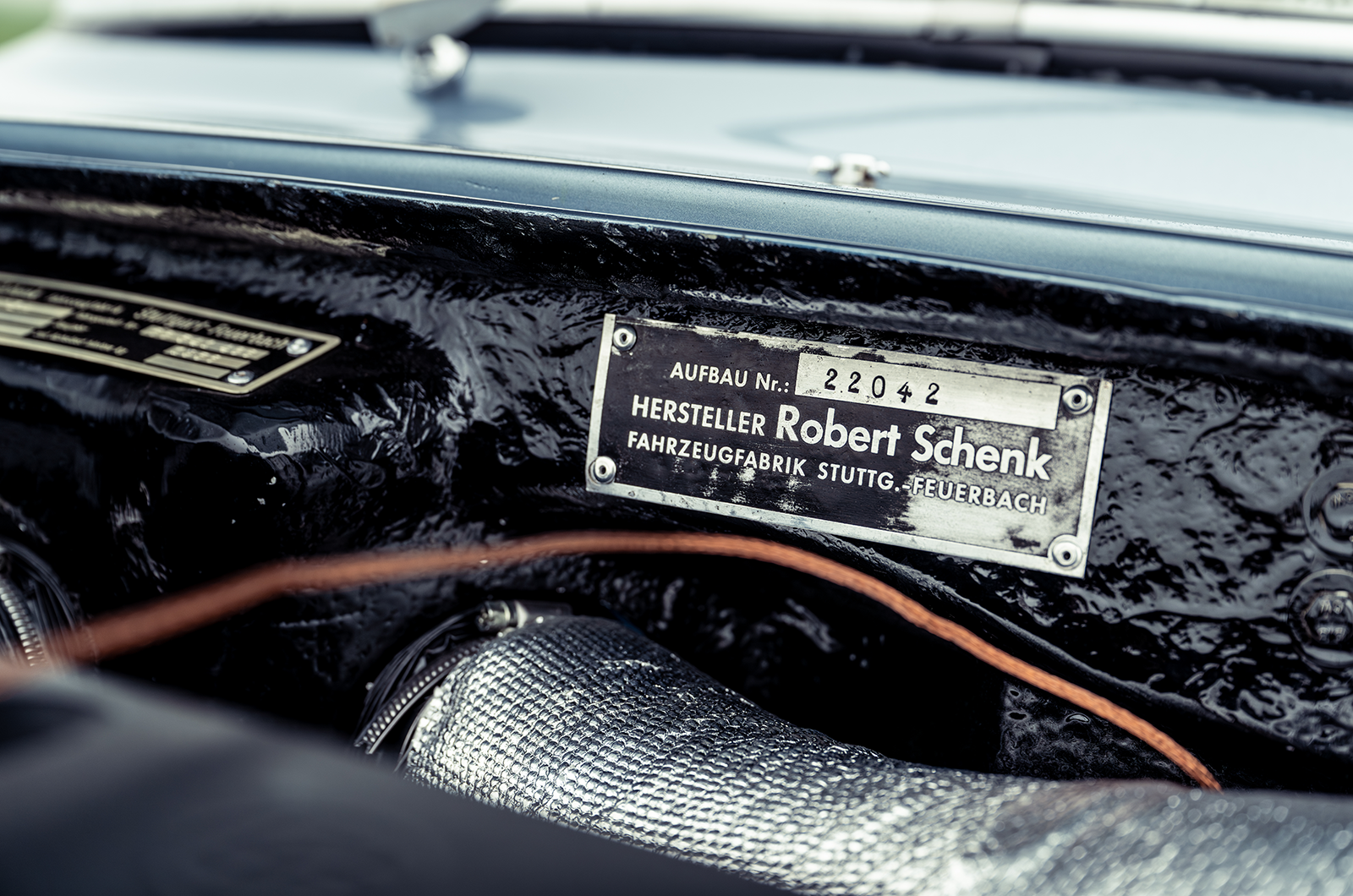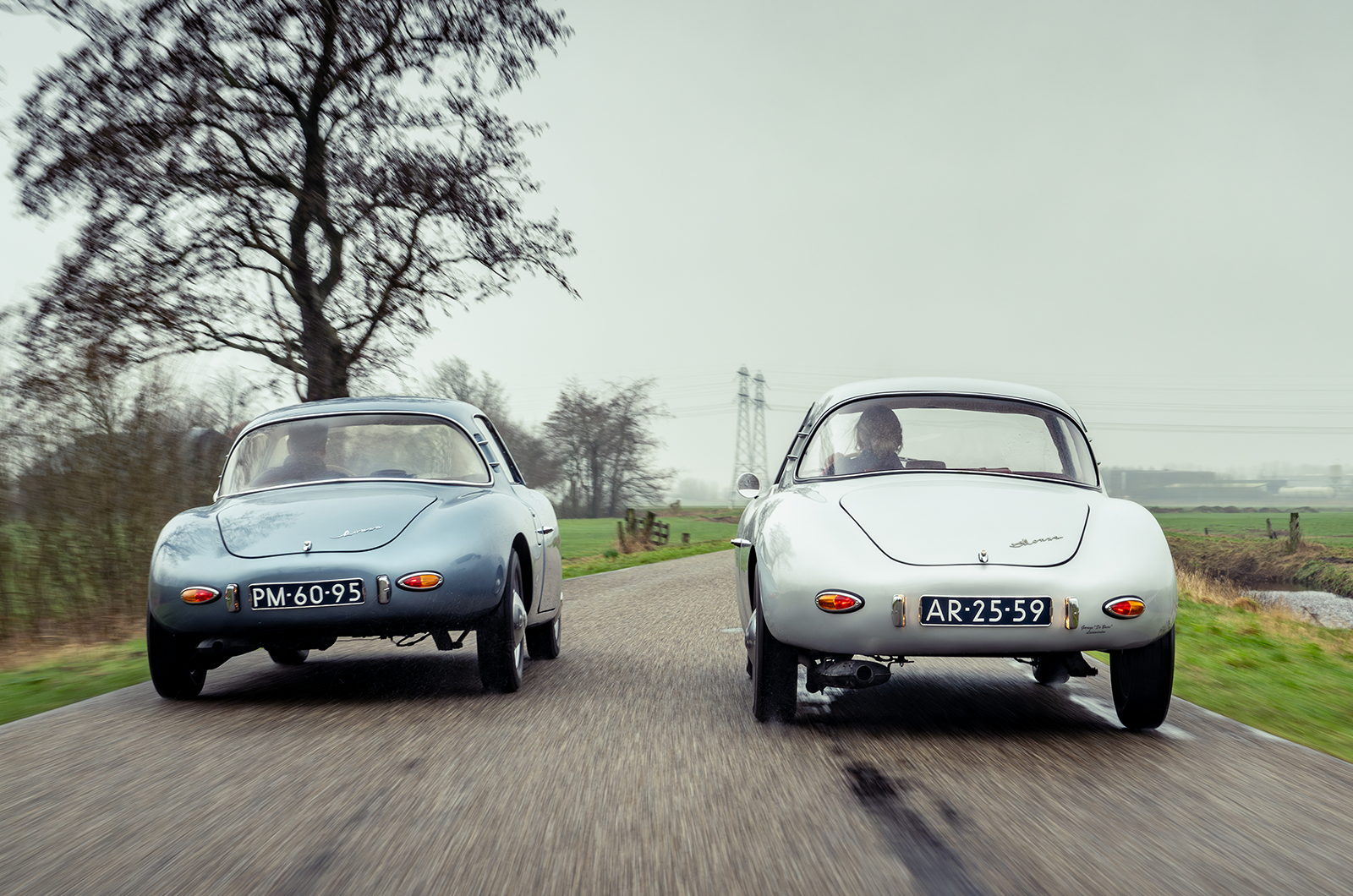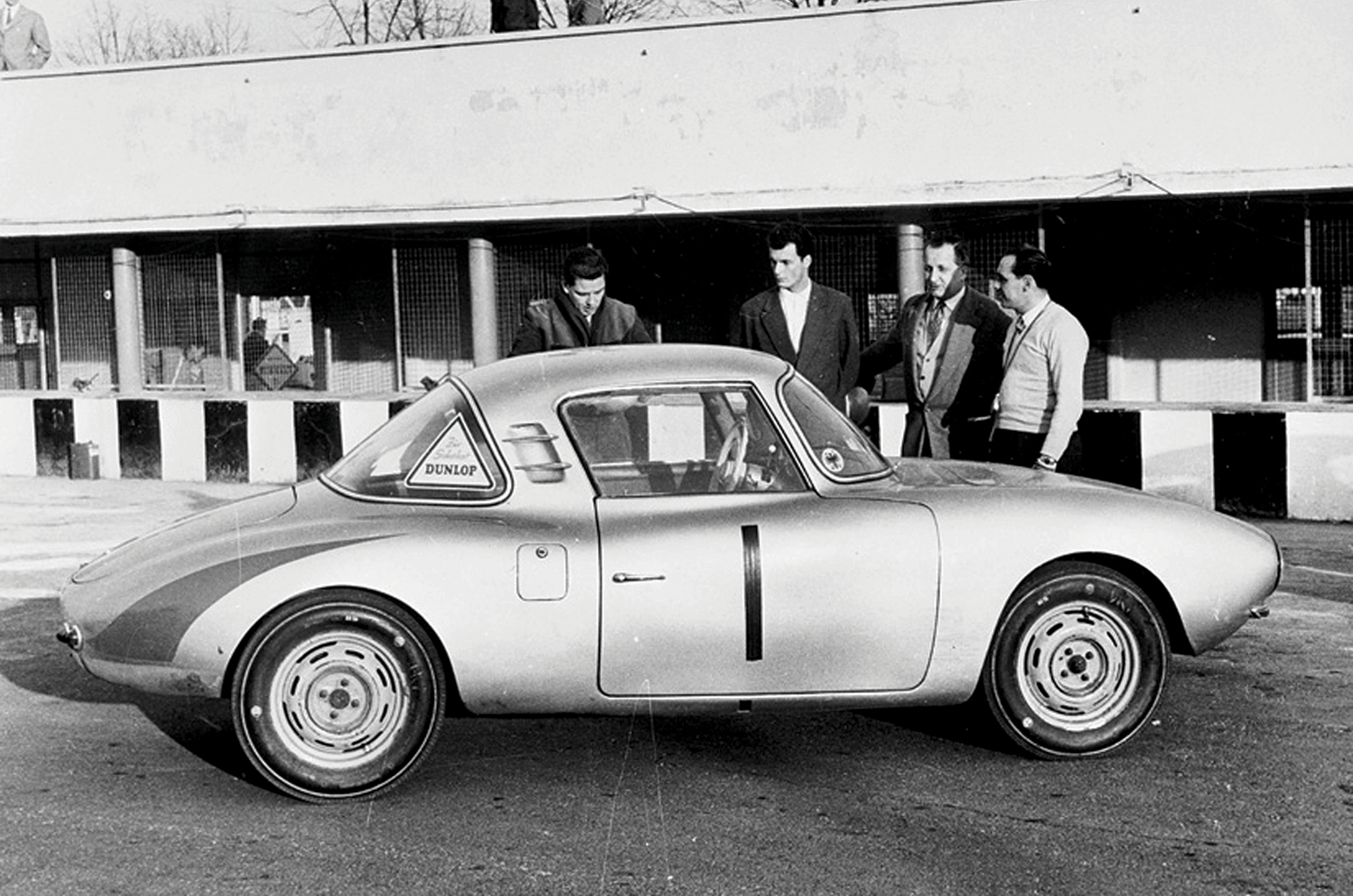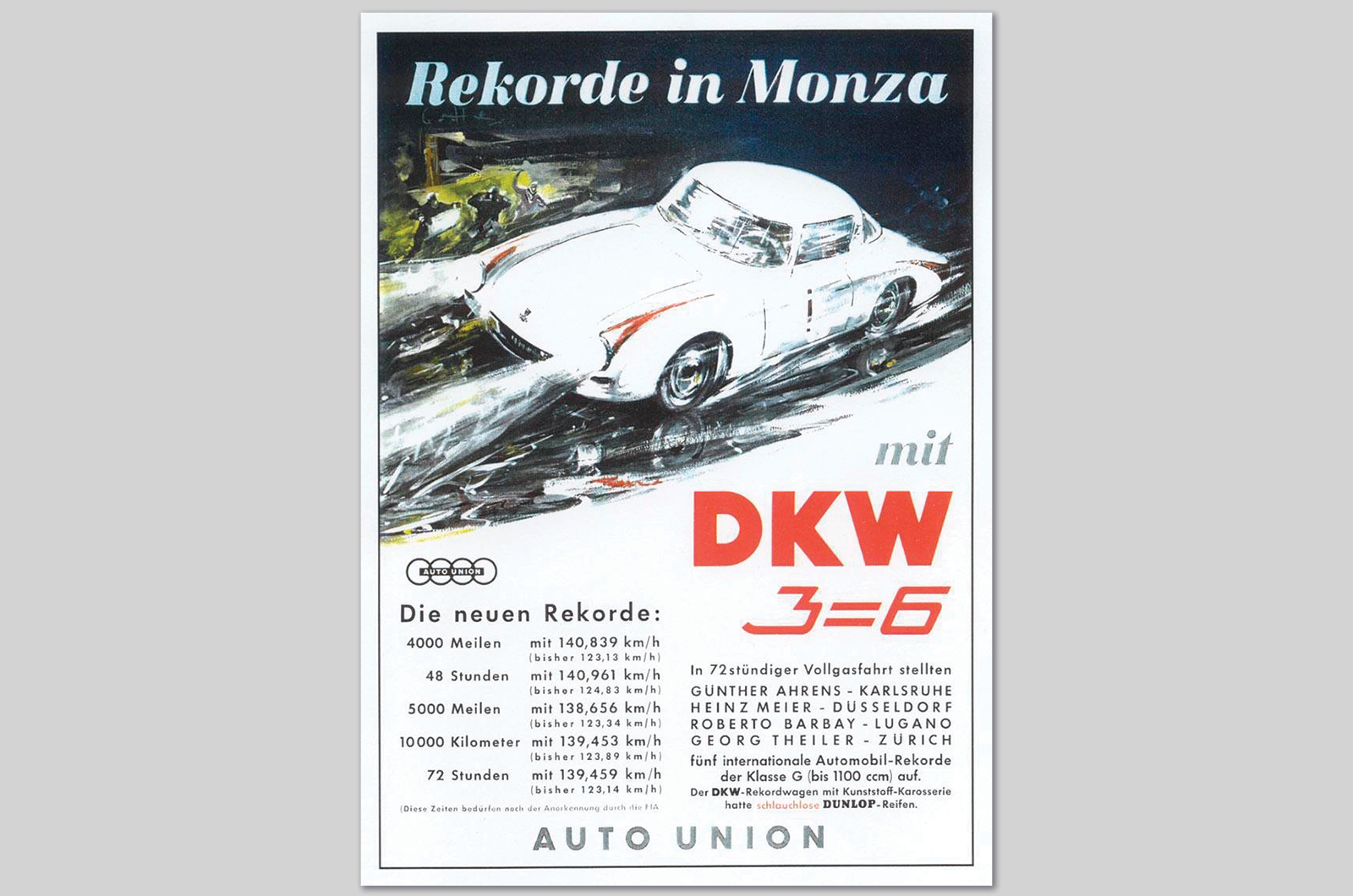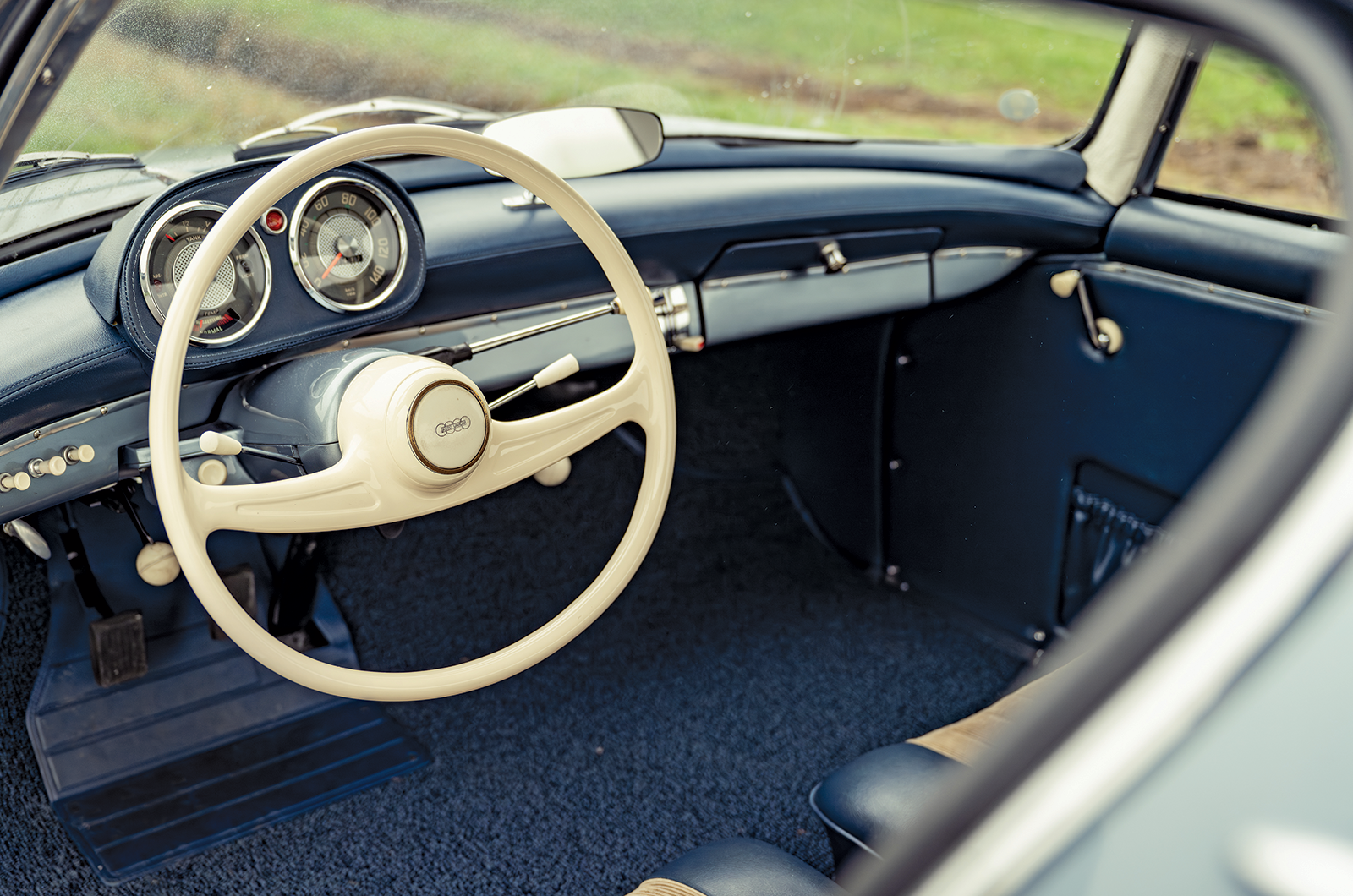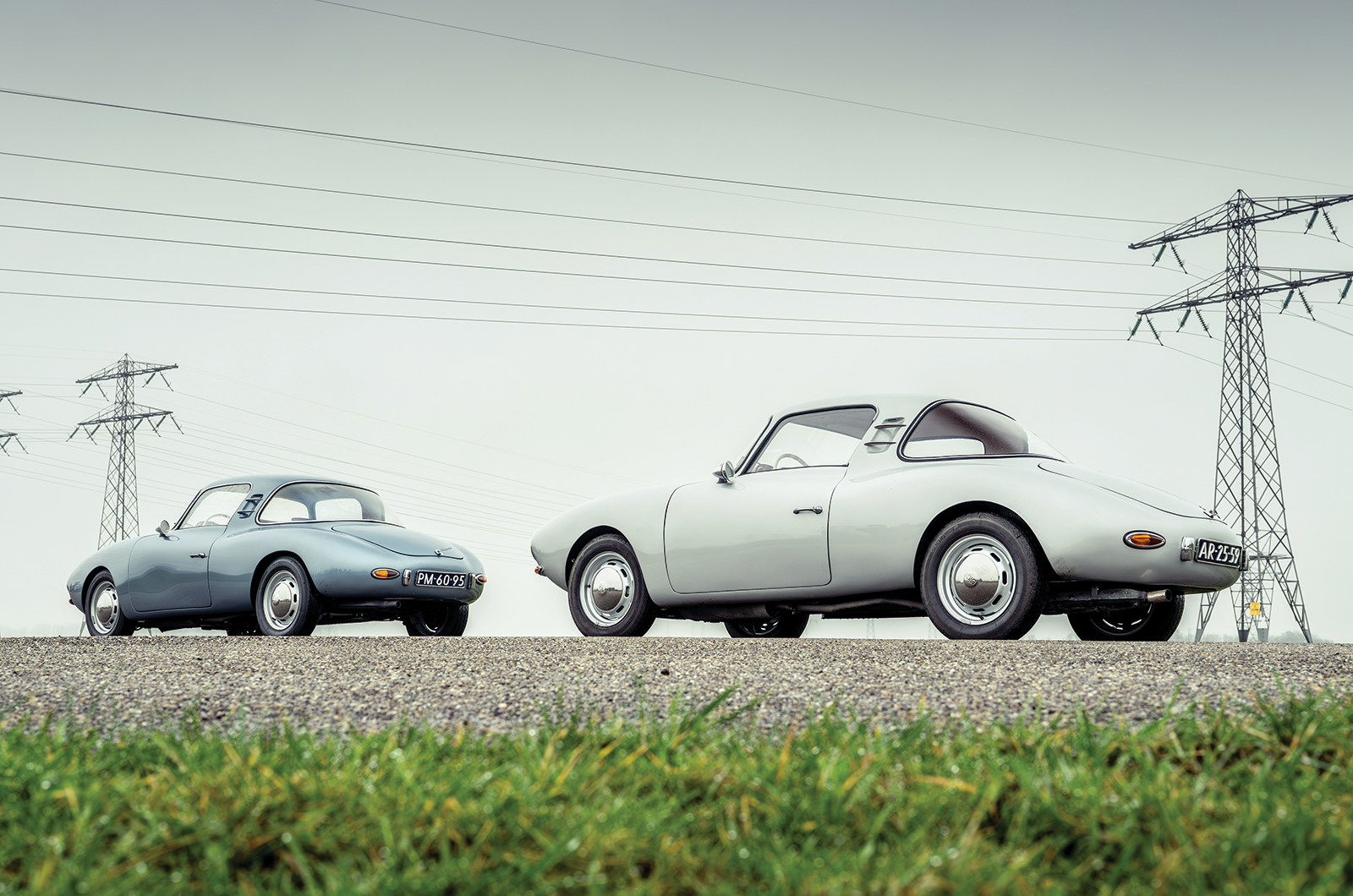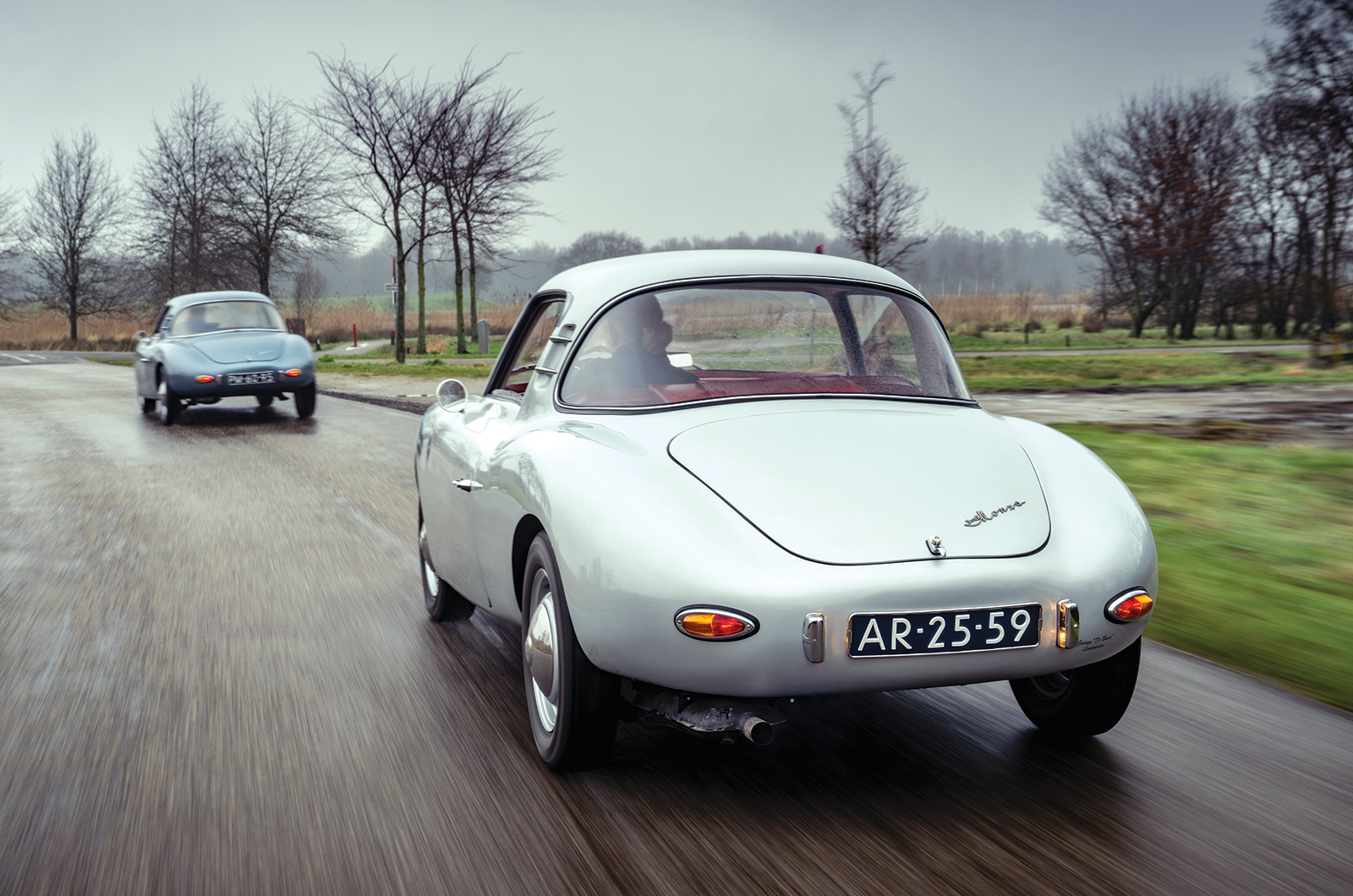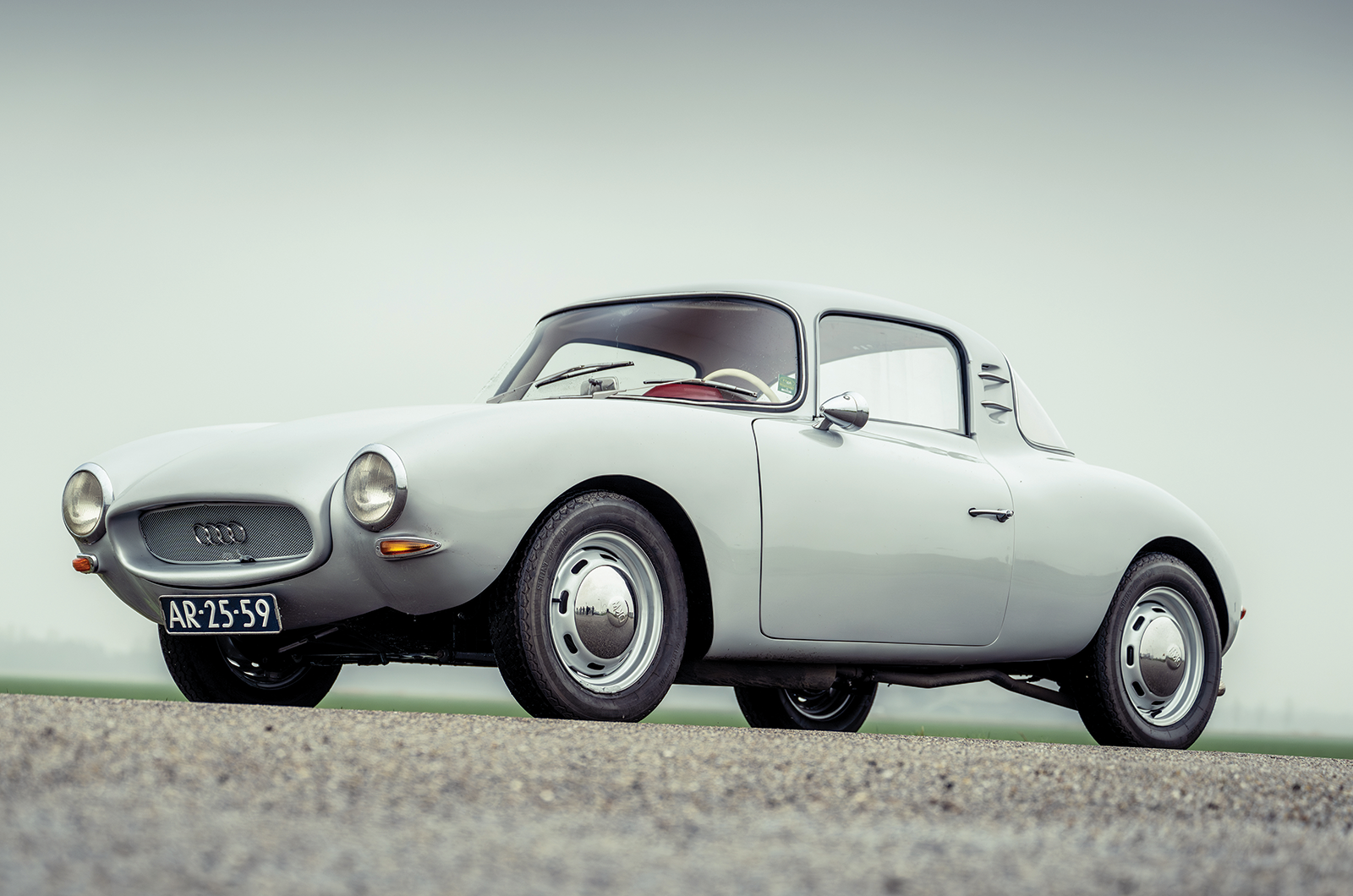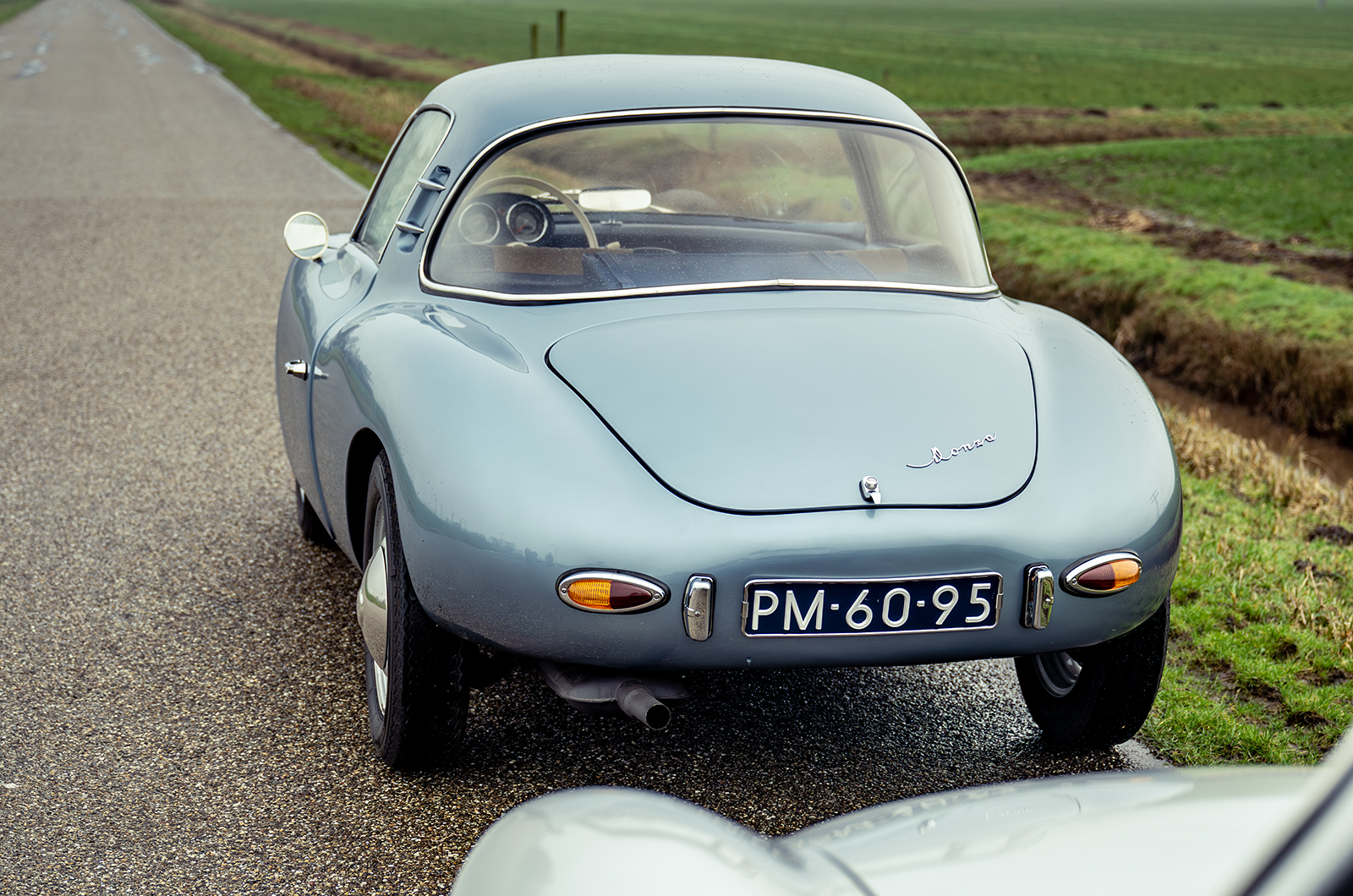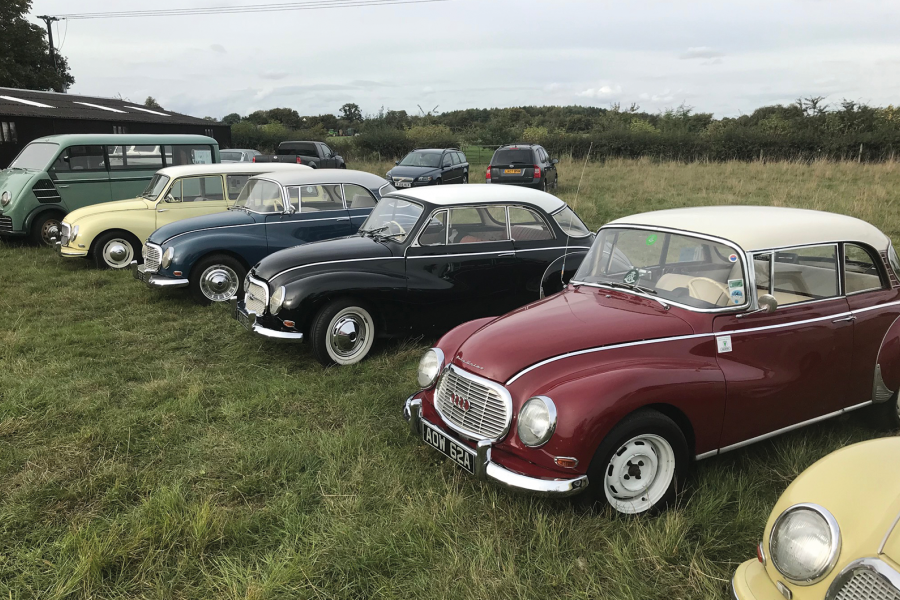“I had to have the nose completely redone, without a mould,” he continues.
“That was a really huge job, enough to give you grey hairs. And making the new Perspex rear window, exactly to size, was also no mean feat.”
Finding the right components wasn’t easy either, especially since the three coachbuilders sourced items such as lighting and hardware from a variety of suppliers.
“It took a lot of time to figure out where the mechanisms had come from to open and close the windows,” says Peter.
“We needed new ones and eventually Marijke worked out that they were from a Volkswagen Karmann Ghia.
“They couldn’t be found, so I ended up making them myself.”
Both these DKW 3=6 Monzas are owned by one enthusiast
The friendly, gurgling engine of one of these Monzas was able to carry a special message to the 1000 Miglia in June: that two-strokes need not always be the sources of dirty, oily exhaust fumes.
It travelled the 1000 miles on Ecomaxx’s Bike Fuel 2, a new ‘clean’ petrol designed for two-strokes.
“Since the 1970s there has been little development in this fuel,” says chemical engineer Ernst van Gelder.
“But there is still quite a demand – not only for classic mopeds, but also chainsaws and so on.
“We picked up the thread and started from scratch, and with good reason: in Sweden, for example, there are strict requirements for fuel quality because of the working conditions of the people who have to use chainsaws and other motorised tools.
“So we have developed a new, ready-to-use two-stroke fuel, using clean alkylate gasoline as a base and a quality oil that’s still capable of lubricating well at high temperatures and burning efficiently at low temperatures.
“We were able to test extensively and perfect it in the world of motocross.”
The DKW’s glassfibre body has some neat design touches
The Monzas are fired up to pose for the camera and, sure enough, there are no clouds of smoke, no unpleasant smells and no greasy fumes – just the enthusiastic noises of two-stroke triples, impatient and eager for action.
Peter is impressed by the development: “If you open up a two-stroke engine, you usually see plenty of soot in the cylinder heads from burned oil.
“I took the head off one of these cars after it had run a few hundred kilometres on the new fuel and it was spotless, as if straight out of the box.”
DKW already has some history at the original Mille Miglia, too.
The standard 3=6, the four-seat Luxus Coupé, competed several times: two entries in 1954, four in ’55 and another two in ’56.
They covered the 1000 miles in about 15 hours, which is highly impressive for cars of such a small displacement.
This DKW 3=6 Monza’s three-cylinder, two-stroke engine runs on a ‘clean’ petrol
In those three years, the DKWs finished successively 70th, 110th and 119th overall in the increasingly rapid field, plus eighth in class twice and fifth once.
The lighter Monza would undoubtedly have done a lot better with its higher top speed, but it never got the chance because the Mille Miglia was finished before full production was under way.
The retrospective officially allows only cars of a type that ran the Mille Miglia when new, but occasionally organisers admit other interesting cars of the period.
In the recent past, the Monza owned by Audi’s museum collection has competed twice.
Indeed, the blue DKW 3=6 Monza pictured here, piloted by Ramon Bourguignon and Anne Meine Gramsma, finished 289th overall and 201st in its class at 2024’s 1000 Miglia, which took place from 11-15 June.
And we’re sure it turned many heads along the way.
Images: Luuk van Kaathoven
Factfile
DKW 3=6 Monza
- Sold/number built 1957/c100
- Construction box-section steel chassis, glassfibre body
- Engine iron-block, alloy-head 980cc two-stroke triple, Solex carburettor
- Max power 55bhp @ 4500rpm
- Max torque 65lb ft @ 3500rpm
- Transmission four-speed manual, FWD
- Suspension: front independent, by lower wishbones rear beam axle, radius arms; transverse leaf spring, telescopic dampers f/r
- Steering rack and pinion
- Brakes drums
- Length 13ft 2¼in (4020mm)
- Width 5ft 5⅔in (1669mm)
- Height 4ft 5⅛in (1350mm)
- Wheelbase 7ft 8½in (2350mm)
- Weight 1698lb (770kg)
- Mpg 26
- 0-60mph 22 secs
- Top speed 93mph
- Price new DM11,175 (1957)
- Price now £50,000*
*Price correct at date of original publication
Enjoy more of the world’s best classic car content every month when you subscribe to C&SC – get our latest deals here
READ MORE
70 years in the making: Dannenhauer & Stauss Sportkabriolett
25 great classic German coupés
Sun seekers: Mercedes-Benz 190SL, Porsche 356 and Borgward Isabella
